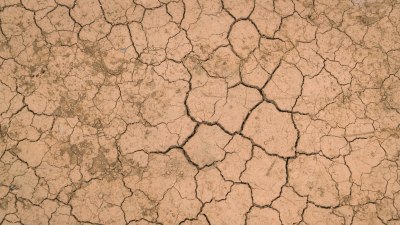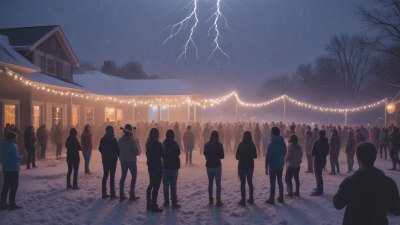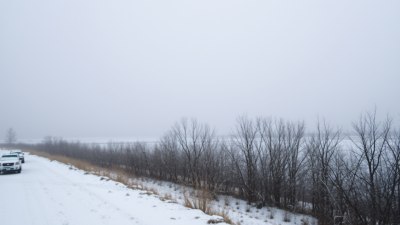What Causes Dry Spells After Massive Flooding
Explore the scientific reasons behind dry spells following massive flooding events and their impacts.

Image by jannoon028 on Freepik
Flooding is often perceived as a catastrophic event, resulting from excessive rainfall, rapid snowmelt, or other natural phenomena. However, what often follows these massive inundations can be equally intriguing: dry spells. Understanding the causes behind these dry interludes can shed light on the nuances of our weather systems and climate patterns. The phenomenon of a dry spell after significant rainfall raises various questions about atmospheric sciences, climate dynamics, and ecological results. In this article, we will explore the factors that contribute to dry spells following extensive flooding, considering elements of meteorology, climate change, and geographical variations.
The Role of Atmospheric Conditions
After a flood, the atmospheric conditions often undergo a dramatic shift. The warm, moisture-laden air that contributes to intense rainfall can give way to a high-pressure system that stabilizes the atmosphere. This high pressure effectively caps the rising warm air, inhibiting further precipitation. The surface layers of the atmosphere become drier as air descends, leading to clear skies and, consequently, dry spells. Such patterns underscore the balance of atmospheric forces: the interplay between high and low-pressure systems can greatly influence weather patterns.
Temperature and Humidity Effects
Temperature significantly affects evaporation rates, which play a crucial role in determining the length of dry spells after flooding. When a flood occurs, the landscape is saturated with water, creating an environment ripe for evaporation if temperatures rise. Warmer temperatures increase the rate at which water evaporates from the ground and water bodies, which can also lead to drier conditions. Furthermore, if these temperatures are coupled with reduced humidity, the effectiveness of moisture retention in the atmosphere decreases, extending the duration of the dry spells.
Seasonal Variations
The timing of flooding events plays a fundamental role in the subsequent dry spells. For instance, if flooding occurs at the end of the rainy season, the transition into the dry season can result in prolonged dry spells. Conversely, floods occurring at the onset of a new wet season may not experience a lengthy dry period. Seasonal variations in weather patterns, influenced by global climate systems such as El Niño or La Niña, can also affect the occurrence and extent of dry spells. These climatic phenomena can alter precipitation patterns and introduce anomalies, such as extended dry phases following wet events.
Geographical Influences
The geographical context in which flooding occurs carries weight when analyzing subsequent dry spells. Areas with distinct geographical features such as mountains, deserts, and large bodies of water can experience varied impacts. For example, mountainous regions may experience enhanced rainfall due to orographic lift; however, these areas can also see significant drying afterward because the wind patterns can redirect moisture away from them. In contrast, coastal regions may face humidity from proximity to oceans, influencing local dry spells differently.
Soil Saturation Dynamics
The saturation level of soil after flooding significantly impacts the length of dry spells. Initially, wet soil can promote evaporation; however, as saturation decreases, the drier soil can lead to enhanced rates of drought-like conditions, particularly during high-temperature phases. Soil moisture plays a vital role in vegetation and agriculture, impacting the ecosystem's overall health. If the soil remains too dry for an extended period after flooding, it can lead to stress on plant life, resulting in long-term consequences for agriculture and biodiversity.
Long-Term Weather Patterns
Long-term weather patterns and climate change are additional considerations that could explain the occurrence of dry spells following floods. As global temperatures rise, weather patterns may shift, producing more intense and sporadic rainfall followed by prolonged dry spells. This increased variability can create conditions conducive to flooding events with subsequent drought phases. Adapting research to understand how these long-term changes may affect flood and drought cycles is critical to developing effective response and mitigation strategies.
Impact on Ecosystems and Agriculture
Dry spells following major flooding can have significant repercussions on ecosystems and agricultural systems. After floods, the sudden drying of the landscape can lead to a shift in habitat conditions affecting wildlife and plant species. Aquatic habitats may also face stress due to fluctuating water levels. For agriculture, crop failures can occur if the dry spells extend into planting or growing seasons, further exacerbated by the moisture already absorbed during the flooding. Understanding these dynamics is essential for managing agricultural practices and conserving local ecosystems effectively.
Preparedness and Mitigation Strategies
To manage the challenges posed by dry spells following flooding, communities and governments can undertake specific preparedness and mitigation strategies. Monitoring weather patterns and implementing water conservation measures post-flood can help address potential dry spells. Establishing effective irrigation systems and drought-resistant planting methods may contribute to a more resilient agricultural framework. Moreover, enhancing rivers and stream management can help alleviate flooding risk and prepare for dry spells by maintaining adequate water levels in times of drought.
Understanding the complexities of weather systems, ecological interactions, and climate trends is crucial to comprehending dry spells following massive flooding events. While floods can wreak havoc, the ensuing dry spells may lead to significant ecological and agricultural challenges, necessitating informed strategies to manage these phenomena. By acknowledging the various factors at play, from atmospheric conditions to geographical influences, we can better prepare for and mitigate the impacts of both flooding and subsequent dry periods.











